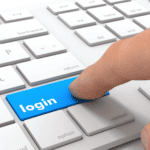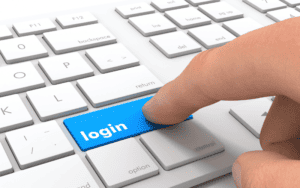The world of multifactor authentication has changed dramatically in recent years. Multifactor authentication, or MFA, has had to adapt to a cybersecurity environment that has evolved rapidly. MFA was created as a way to ensure the identity of a user. Rather than just a single password, there would have to be multiple factors that a user would have to input to authenticate their identity. Typically, this would be a pin code sent by text or email.
But the efforts of modern hackers have meant that this form of authentication has had to change. Hackers can now bypass many of the standard multifactor authentication methods out there through advanced phishing techniques, which has forced cybersecurity experts to respond. What they have done is create contemporary authentication solutions that use multiple factors. Let’s look at some critical aspects a modern MFA solution should provide for enterprise users.
Use Authentication Methods Resistant to Phishing
One of the biggest reasons that modern MFA (Multi Factor Authentication) has had to change so much is that hackers have gotten more sophisticated. While before, a multifactor text message or email would be enough to deter the average hacker, this likely isn’t the case anymore. Hackers have gotten very adept at man-in-the-middle attacks that make methods like push notifications, text messages, and emailed links susceptible to attacks. Cybersecurity for a contemporary enterprise should avoid these methods and focus on implementing authentication solutions that are more difficult to phish.
There are modern authentication methods that are far more difficult for hackers to extricate with a phishing scheme. For example, biometric-based authentication solutions that rely on fingerprints or facial scans are very difficult for even experienced hackers to acquire. Another popular method is a device-based solution, when the MFA software checks the device the user is using to ensure it is allowed to enter the system. Many companies offer features like this, such as the Ping Identity MFA solution.
Include Risk-Based Authentication
The work is never done for authentication. A modern MFA architecture will continue to monitor the risk of a user from end to end. While this may sound overcautious, this type of security is how you ensure that your system is protected. There were more than 4,100 publically disclosed data breaches in 2022 that led to more than 22 billion records being exposed. You can never be too careful, which is why many contemporary enterprises have risk-based authentication solutions engrained into their MFA architecture.
Risk-based authentication is when a security system assesses the risk of each user throughout their time using the software. It will assess this risk based on their device, behavior while logging in, location, and much more. It is a way of adding an additional layer of safety that goes beyond just a login. The system will assess the perceived level of risk against company policies to ensure data is safe and secure.
Take The Onus Away from Employees
One thing in security that is best avoided is trust. Trust is important in many areas of life, but a zero-trust policy is the best practice when it comes to cybersecurity. A system that isn’t constantly assessing risk and is too trusting of different users is likely to be taken advantage of. While employees are trusted in many areas of business, security is an area that should take the onus away from employees if possible. Modern solutions reduce the amount of decisions employees need to make and minimize the impact of their mistakes.
More than 40% of reported enterprise security breaches are due to employee negligence. This is a substantial percentage, and it is no coincidence. Employees are prone to making security mistakes because not all have a high-level understanding of security. Modern MFA solutions, like the Ping Identity MFA software, take the burden off employees' shoulders. Phishing-proof methods like device or biometric-based authentication limit the impact of employees' decisions. The system is in control, not the employees. This drastically reduces human error.
Enable Passwordless Authentication
Passwords have been necessary for digital security for a long time. They are a way for users to identify themselves to a system, and for many years, were the best bet against breaches. But in the modern age of sophisticated hacks, passwords are now more of a risk than a benefit. More than 80% of hacking-related data breaches directly result from stolen passwords. A simple password-based system is very vulnerable, which is why many modern MFA solutions have simply cut passwords out of the equation.
Passwordless authentication is a form of verification that doesn’t require user passwords. Passwordless MFA is simply passwordless authentication where there are multiple potential factors that could be possession-based, like if the device is registered with the enterprise system, or biometric-based. Phishing for passwords is one of the most common ways an enterprise gets hacked, so cutting out passwords altogether will play a substantial role in eliminating this problem. Moving toward a full passwordless system is one of the modern methods that enterprises use to tackle a new world of cybersecurity.
Easy Adoption and Straightforward User Experience
Adoption and implementation are largely defined by how easy something is for an enterprise. If implementing a new security infrastructure requires significant work, most enterprises will pass the solution over. This doesn’t have to be the case with contemporary multifactor solutions. That is because they are easy to implement and have a straightforward user experience that enterprises will prefer.
Previous multifactor methods like a One Time Password or emailed link are difficult for users. They have to check back and forth for emails or text messages and input a lot of different information. This is not the case with contemporary MFA software. This type of solution is rarely even noticed by users because it can be entirely passwordless, based on the device used, and assessed as a risk without the need for user input. The user experience is seamless and doesn’t require much effort or recall. The user won't have to remember anything in passwordless, device-based, or biometric-based MFA solutions. It is as simple and efficient as possible.







